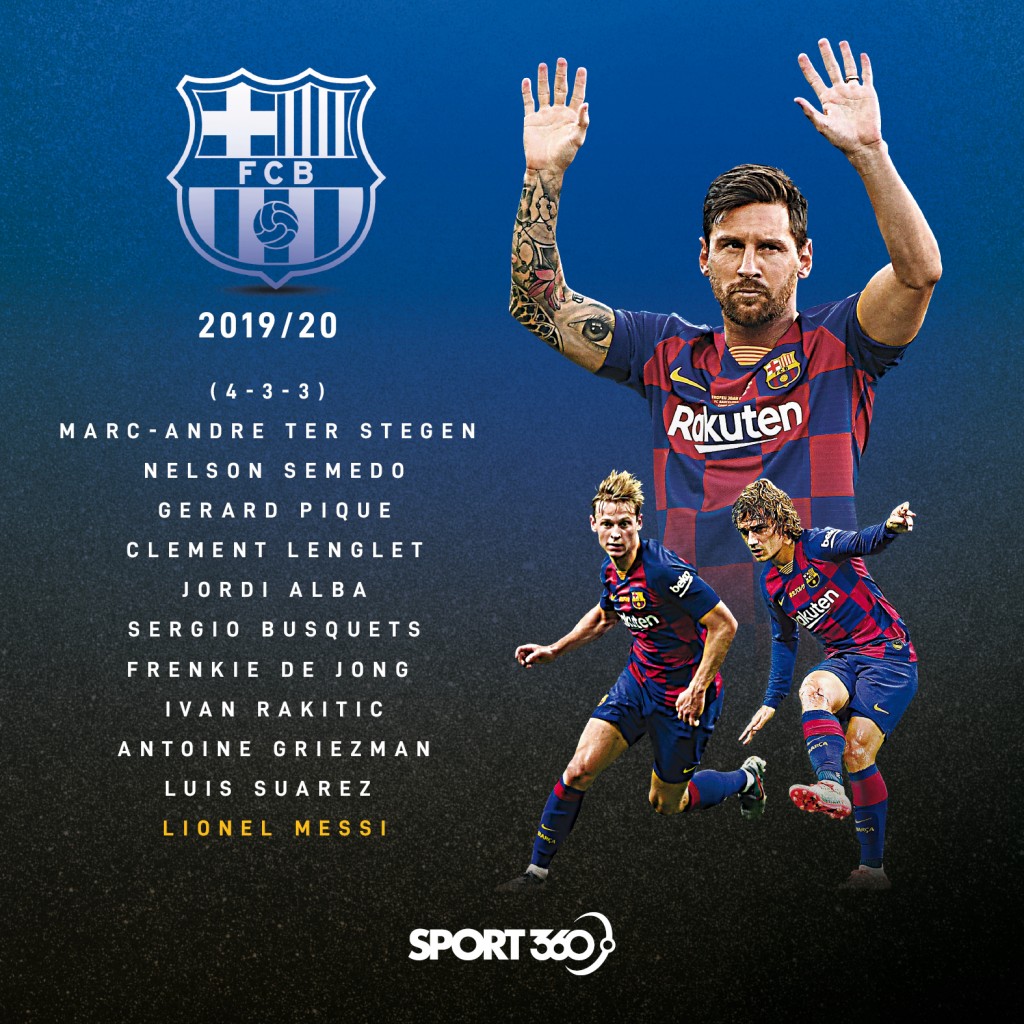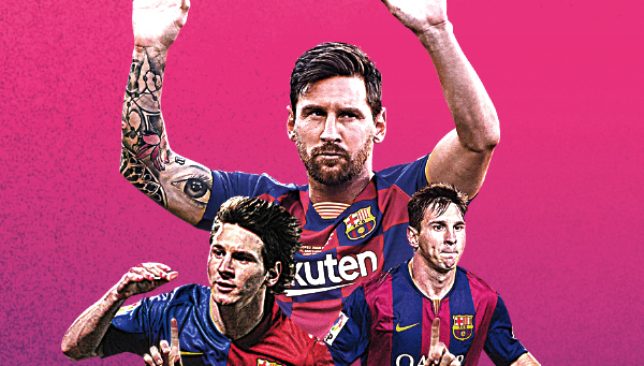
Lionel Messi is the best player in the world and during his rise to the pinnacle of football, he’s shaped the way Barcelona play.
Once he began to unleash the full extent of his powers, the Catalans were always going to design a system and assemble a team that catered to his unparalleled ability.
With five Ballon d’Or wins to his name a staggering 34 trophies for the club, it’s safe to say that strategy paid off handsomely.
Here, we look at the best teams Messi has been part of and how he operated within them before previewing his role in Barcelona’s set-up this season.
BARCELONA 2008/09
This season was significant for several reasons. It was Pep Guardiola’s first with the senior team and in revolutionising Barcelona’s style of play, he also landed them their first ever treble.
The season also announced him as one of the best managers in the world and Messi as the best player, sealed with his first of five Ballon d’Ors.
The football centred around possession, with rondos a popular drill in training sessions. Andres Iniesta and Xavi were given complete freedom to orchestrate proceedings in midfield while Messi would regularly make diagonal runs in behind or dribble inside from the right.
The full-backs were auxiliary wingers with Dani Alves in particular spending more time in the final third than his own half. Forming passing triangles all over the pitch and moving the ball quickly was the norm.
They employed a high-line and off the ball, they hunted in packs, enforcing an intense and aggressive press for five seconds after losing possession, during which time they usually regained it.
Messi was well coached and developed the ability to time his runs to perfection or link up with those around him before punishing the opposition when afforded space.
At the end of the season, Guardiola debuted his false 9 tactic that saw Messi destroy Real Madrid in a 6-2 El Clasico win. It was the beginning of the Argentine’s evolution.
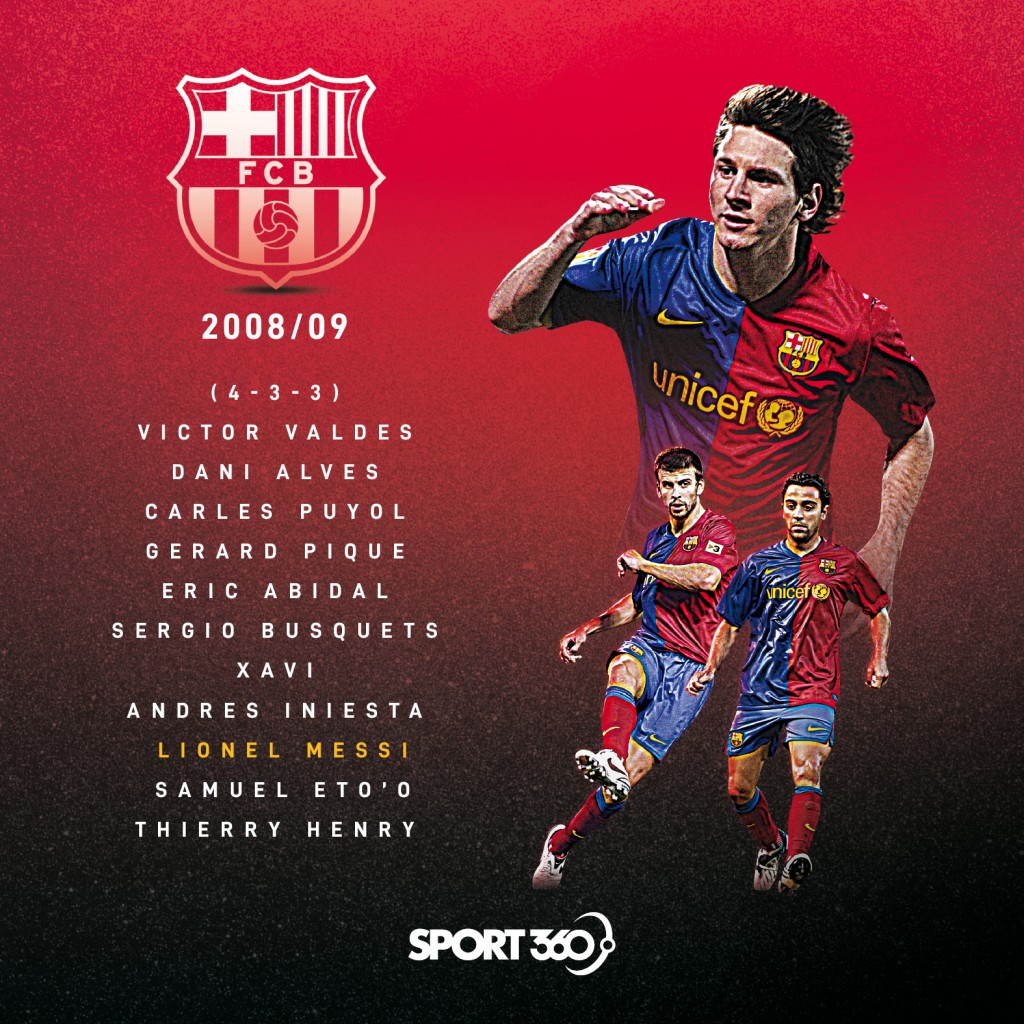
BARCELONA 2010/11
4-3-3: Victor Valdes; Dani Alves, Javier Mascherano,Gerard Pique, Eric Abidal; Sergio Busquets, Xavi, Andres Iniesta; David Villa, Lionel Messi, Pedro
Manchester United and Barcelona’s Champions League final meeting in 2011 was a repeat of their clash in 2009.
The English outfit was well beaten again but while they weren’t as a good as they were two years prior, the Catalans were somehow even better.
That may be a slightly controversial statement given they didn’t win the treble that campaign, but it was only an extra-time winner from Cristiano Ronaldo in the Copa del Rey final that kept them from repeating the feat.
Fully adjusted to Guardiola’s demanding approach, this Barcelona team was as close to perfection as they would get. The inspired deployment of Messi as a false 9 was not only completely integrated with the style of play but became central to it.
The diminutive forward was now an unstoppable force. He went from arriving into goal-scoring positions to constantly hovering in and around them.
That reflected in his record as his tally of 38 goals in the 2008/09 season was upped significantly to 53.
In Pedro and David Villa, Guardiola had supremely technical forwards who could operate in the half spaces or dart in behind when Messi dropped short and dragged a defender out of position.
The team was at its best defensively this season, conceding just 21 goals in La Liga. Sergio Busquets had grown into his defensive midfield role while Eric Abidal was one of the best left-backs around and Javier Mascherano’s transformation to a central defender paid dividends.
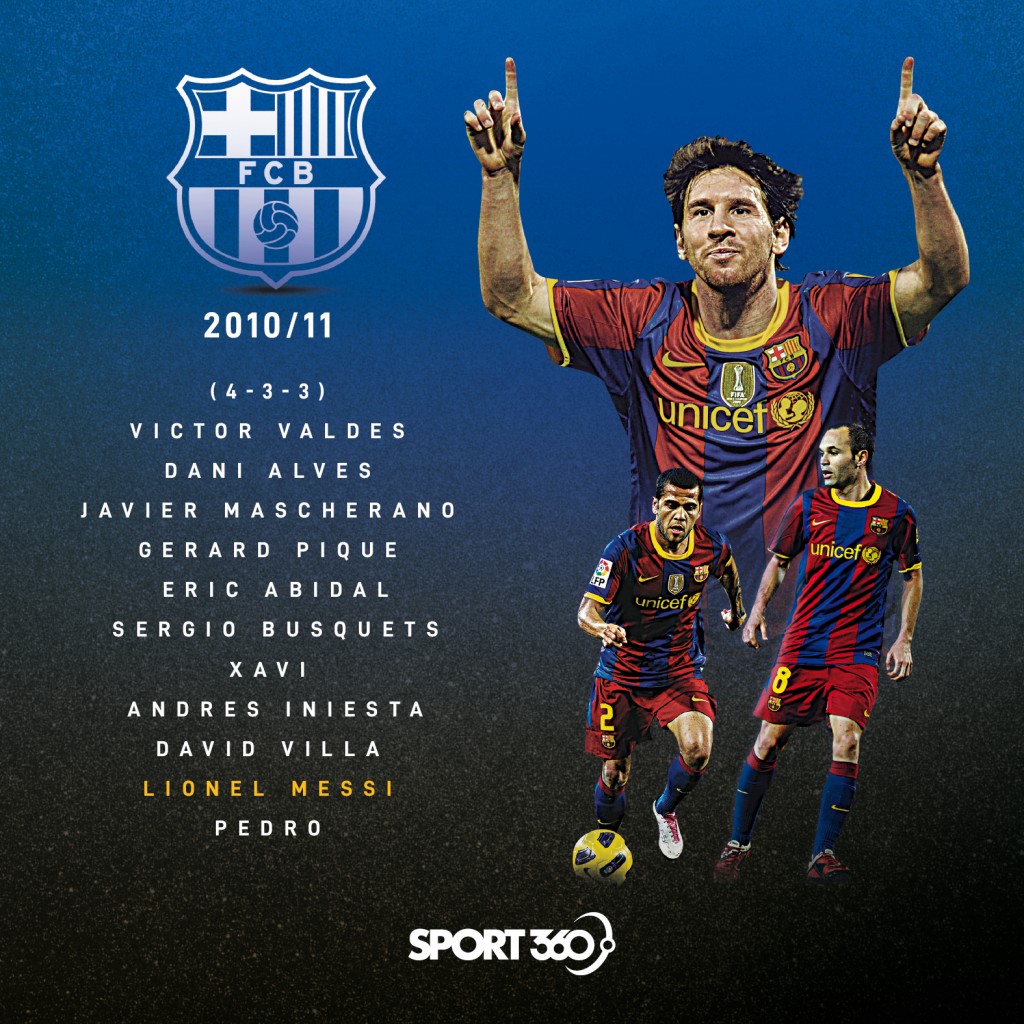
BARCELONA – 2014/15
4-3-3: Marc-Andre ter Stegen; Dani Alves, Javier Mascherano, Gerard Pique, Jordi Alba; Sergio Busquets, Ivan Rakitic, Andres Iniesta; Neymar, Luis Suarez, Lionel Messi
This campaign can largely be summed up in three letters: MSN.
Neymar had already been at the club for a year, while Luis Suarez arrived from Liverpool to complete a devastating front three lead by Messi. It made for the kind of scintillating football Barcelona fans were almost caught off guard by.
The previous season under Gerardo Martino was a shock to the system after the glory years of Guardiola and then Tito Vilanova’s title-winning term. It seemed as if Barca’s reign at the top was ending, but then Luis Enrique came on board and led them to their second treble.
A former Barca player himself, he maintained a lot of the core values that were reinforced during the Guardiola era, but he added a few touches of his own which were noticeable in the dynamism of their play.
They still monopolised possession but rather than pass the opposition into submission, they were at their electrifying best in the transition. Xavi’s departure saw new signing Ivan Rakitic provide more drive from midfield while Jordi Alba emerged as a creative force from left-back, mirroring Alves’ influence on the opposite flank.
Messi lined up on the right but remained very much central to Barca’s play with Rakitic often bombing down that channel while Alves generated the genuine width.
The front three were interchangeable and irresistible. Together, they scored a whopping 122 goals as the Catalans swept all before them.
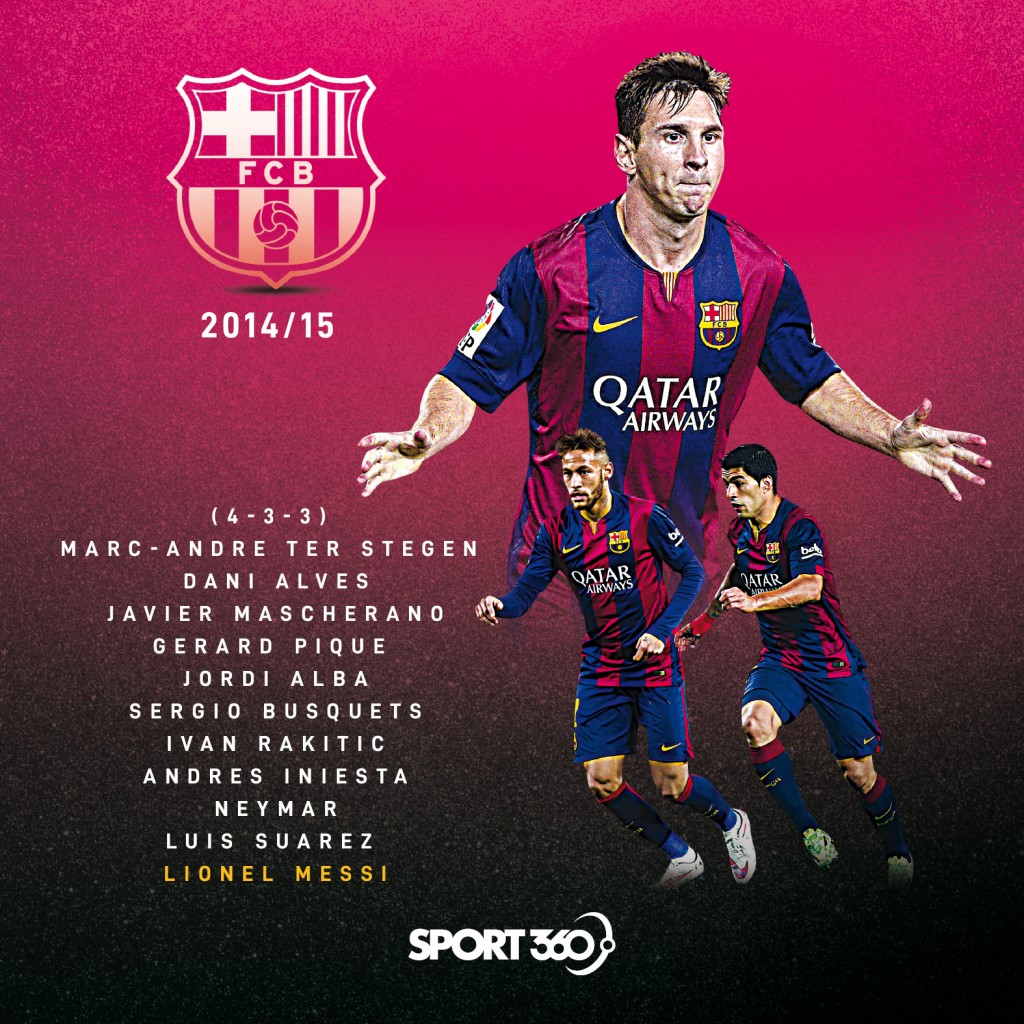
BARCELONA – 2019/20
4-3-3: Marc-Andre ter Stegen; Nelson Semedo, Gerard Pique, Clement Lenglet, Jordi Alba; Sergio Busquets, Frenkie de Jong, Ivan Rakitic; Antoine Griezman, Luis Suarez, Lionel Messi
Ernesto Valverde has won back-to-back La Liga titles, but he is well and truly under pressure this season.
The Catalans have never fully taken to the pragmatic coach who implemented a 4-4-2 system upon his arrival two years ago to make the team more compact and balanced.
They still enjoyed the greater share of possession, but no longer exercised complete control over their opponents. Last season, they lost a level of stability at the back as well and won the league by default with both Madrid clubs faltering.
In pre-season, Valverde has employed a 4-3-3 formation that remained intact for their opening day defeat at Athletic Bilbao and then over their first three games as well. Messi’s injury means he’s yet to feature in this system.
Frenkie de Jong looks like he either replaces Busquets as the anchorman in midfield or plays in a more advanced role when the veteran features while Antoine Griezmann has boosted options in the front line.
Plenty of uncertainty remains over how the team will operate over the course of this season but the belief is that Valverde will strive to be more attacking this season. He certainly has the players for it. It’s not come together yet with just four points from three games, but things will presumably improve once key players return.
